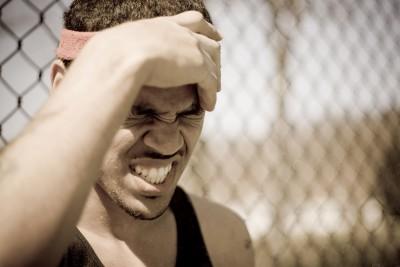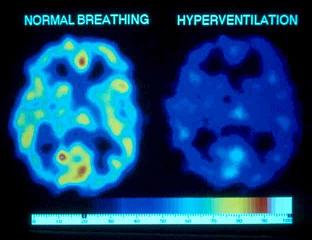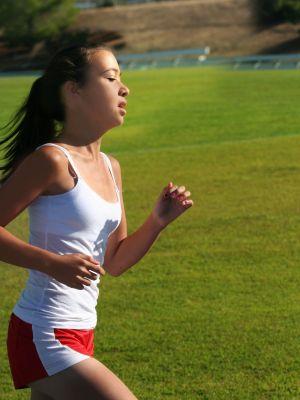- Updated on September 13, 2020
![]() By Dr. Artour Rakhimov, Alternative Health Educator and Author
By Dr. Artour Rakhimov, Alternative Health Educator and Author
- Medically Reviewed by Naziliya Rakhimova, MD
 Headache after exercise (or so-called exertional headaches or headaches on exertion) are very common in modern athletes and people who exercise (Turner, 2003). The cause of a headache may sometimes relate to allergic triggers in the air or some other environmental effects on the human body. However, most of the cases of headache after exercise are due to reduced oxygen levels in the brain during and after exercise. Over 180 Russian MDs tested hundreds of their patients and found that such headaches exist only in people who have less than 30 seconds for the body oxygen test.
Headache after exercise (or so-called exertional headaches or headaches on exertion) are very common in modern athletes and people who exercise (Turner, 2003). The cause of a headache may sometimes relate to allergic triggers in the air or some other environmental effects on the human body. However, most of the cases of headache after exercise are due to reduced oxygen levels in the brain during and after exercise. Over 180 Russian MDs tested hundreds of their patients and found that such headaches exist only in people who have less than 30 seconds for the body oxygen test.
Why could brain oxygenation get reduced? It is all in the way we breathe during exercise. Once we start to lose carbon dioxide (via overbreathing), brain-oxygen levels immediately drop. Later, breathing remains heavy (after exercise), and it also causes pain in muscles and slow recovery rates.
 This image on the left (done with PET scan) shows the effects of one minute of hyperventilation on oxygen availability in the brain. (PET scans reflect oxygen content in cross-sections of the brain). The cause of low oxygen levels in the brain is low arterial CO2 (hypocapnia), which leads to constriction of blood vessels (arteries and arterioles) and reduced blood and oxygen supply to the nerve cells.
This image on the left (done with PET scan) shows the effects of one minute of hyperventilation on oxygen availability in the brain. (PET scans reflect oxygen content in cross-sections of the brain). The cause of low oxygen levels in the brain is low arterial CO2 (hypocapnia), which leads to constriction of blood vessels (arteries and arterioles) and reduced blood and oxygen supply to the nerve cells.
Have you done running, cycling or cross-country skiing together with very fit athletes? What is their noticeable difference? Their breathing patterns are lighter and easier. They do not gasp for air. Many of them have no problems talking and exercising at the same time. Lighter breathing increases CO2 and O2 levels in the brain. Really healthy people have light and easy breathing at rest too.
The Key factor for a headache after Exercise
 For most people mouth breathing during exercise reduces arterial CO2. Only very fit athletes are able to keep high CO2 in the blood during exercise due to their lighter and easier breathing even at high intensities. Therefore, oral breathing has the same effect on brain oxygenation as hyperventilation (or overbreathing). It causes reduced CO2 and O2 levels in the brain cells. Since oxygen and carbon dioxide are fundamental for normal nerve cell functions, headaches on exertion are body cries for more oxygen and breathing retraining or breathing normalization.
For most people mouth breathing during exercise reduces arterial CO2. Only very fit athletes are able to keep high CO2 in the blood during exercise due to their lighter and easier breathing even at high intensities. Therefore, oral breathing has the same effect on brain oxygenation as hyperventilation (or overbreathing). It causes reduced CO2 and O2 levels in the brain cells. Since oxygen and carbon dioxide are fundamental for normal nerve cell functions, headaches on exertion are body cries for more oxygen and breathing retraining or breathing normalization.
In order to test these ideas, go for a lighter form of exercise, but with nose breathing only. Most people can eliminate these headaches if they use strictly nasal breathing (in and out) and slightly reduced intensity of physical exercise. With over certain seconds for the body-oxygen test, it is very unlikely that one can get a headache after exercise. You can find this exact number in the next paragraph as your bonus content.
You need to have over 30 seconds for the CP test 24/7.
[/sociallocker]
Visit the Fitness section of this site for more pages on sports and fitness.
References
Turner J, Exercise-related Migraine, Curr Sports Med Rep. 2003 Feb;2(1):15-7.
Indiana University Center for Sports Medicine, Indianapolis, IN 46202, USA.

